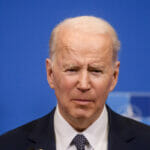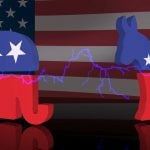Newseum’s Jeffrey Herbst and University of Cape Town’s Murray Leibbrandt discuss South Africa’s credit downgrade and what’s next for the country.
Hopes have receded in the past three weeks for a steady recovery of South Africa’s fragile economy with the downgrade earlier this month of the country’s credit rating to junk status. The immediate trigger was the move on March 30 by South African President Jacob Zuma to reshuffle the leadership at 10 ministries. That purge ejected finance minister Pravin Gordhan, who was widely seen as instrumental in pushing reforms on several fronts including revitalizing the private sector and helping create jobs. More significantly, he was credited with measures to stanch corruption in government.
South Africa
“The executive changes initiated by President Zuma have put at risk fiscal and growth outcomes,” S&P said when it downgraded the country on April 3. Four days later, Fitch did the same, and said the removal of Gordhan and his deputy Mcebisi Jonas “is likely to result in a change in the direction of economic policy.” Rating agency Moody’s has placed the country on a review for a downgrade, and pointed to unfinished work such as reforms to boost private sector participation in the mining sector, and “in encouraging a more even distribution of wealth.”
Malusi Gigaba, South Africa’s finance minister who replaced Gordhan, plans to meet with Moody’s officials in New York City later this week and persuade the agency to avoid downgrading the country’s credit rating, according to South African news site Times Live. Gigaba will be in New York City for meetings this weekend with the World Bank and the International Monetary Fund.
“Gordhan was seen as a bulwark against corruption and a series of government moves which might have enriched Zuma and his allies,” said Jeffrey Herbst, president and CEO of the Newseum and co-author of the book How South Africa Works and a forthcoming book titled Making Africa Work: A Handbook for Economic Success. Gordhan opposed many of the Zuma government’s actions “which didn’t make much sense for the country, including the purchase of several Russian nuclear power plants,” he noted.
The South African economy has been growing at less than 1% annually, but under Gordhan, “it had dug in and was consolidating a little bit in quite an impressive way,” said Murray Leibbrandt, a professor at the University of Cape Town’s School of Economics and director of the Southern African Labour and Development Research Unit. “The government was talking to business … about making things work collectively.”
“The major victims of Zuma’s policies are poor Africans.” –Jeffrey Herbst
Herbst and Leibbrandt discussed South Africa’s political and economic uncertainties on the Knowledge@Wharton show on Wharton Business Radio on SiriusXM channel 111. (Listen to the podcast at the top of this page.)
A ‘Credible Path’
According to Leibbrandt, sacking Gordhan was Zuma’s worst move. “Gordhan was making the right friendly noises in the sense that they were on a joint mission to keep the economy stable, keep inflation under control and try and collectively handle the employment issue that it is at the core of South Arica‘s economic transformation,” he said.
Before Gordhan was fired, “there was a sense that may be we were winning the war with the ratings agencies in the sense that we had a credible path [forward] that we were plotting. That all got shattered,” said Leibbrandt. “Gordhan also is driving a particular agenda around getting well-functioning state-owned enterprises holding the line on abuse of government money and enabling government to play its part in the compact that they were trying to craft with the private sector.”
In firing Gordhan along with several other ministry heads, Zuma showed he was “a brilliant political tactician,” said Herbst. “He knew that the markets and a fair number of people would be upset by the firing of the finance minister, so why not do the entire house cleaning at once? Because you wouldn’t get people any more annoyed if you got rid of a lot of other people. He struck quickly, and had his opponents off balance.”
Zuma may well have predicted the ratings downgrade, and the strength of the popular protests and discontent within his party, said Herbst. “They were all … probably from his perspective, on the low side of oppositional activity.” Leibbrandt noted that many of those Zuma sacked were not part of the Gordhan camp. In sending that mixed message, Zuma’s action “was masterful in a dark humor sort of way,” he added.
A Steady Decline
Herbst laid out the broader historical backdrop for those events. He noted that Nelson Mandela did well after his African National Party won the 1994 multiracial elections, formally ending apartheid. But after Zuma became president in 2008, “economic management of the economy has deteriorated greatly,” even as the country faced many challenges inherited from its period of apartheid (1948-1994), he said. Market reaction to the recent firing of cabinet ministers has been negative. Popular protests have erupted, involving tens of thousands of people — although in a county of 54 million people, they are not yet a threat to the government yet, he added.
“[Under Pravin Gordhan,] there was a sense that maybe we were winning the war with the ratings agencies in the sense that we had a credible path.” –Murray Leibbrandt
Many promises made by the African National Congress (ANC) before the transition from apartheid have also not been kept, said Herbst. The ANC had pledged that there would be mass transformation of the economy, and means of production and ownership would be transferred to the African population, but “that did not happen,” he added. “More than two decades after the transition, while the ANC has political control, economic control is still divided and still very much with the white population.”
The issue now in South Africa is not one of white vs. black, and in fact, “the major victims of Zuma’s policies are poor Africans,” Herbst said. Unemployment has increased and the unemployed in South Africa have very little voice, he added. However, the trade unions that were instrumental in the ANC winning elections have secured handsome minimum wages for formal workers and labor regulations that make it very difficult for employers to fire anyone, he said. That has left informal sector workers unprotected in an economy that produces few jobs. He added that in research interviews he and his book co-author, Greg Mills, conducted in the country, “most employers were doing everything possible not to hire people because they just thought it was economically too difficult.”
The Mugabe Moment
“South Africa has reached its Mugabe Moment,” wrote Herbst and Mills in the Washington Post after Zuma reshuffled his cabinet last month. Herbst explained what he meant by that: In 1980, Robert Mugabe took over as prime minster of Zimbabwe (and is now president), but since the mid-1990s, “Zimbabwe has had one of the worst economic performances in the world. “The once relatively prosperous country has gone through hyper inflation and significant economic decline.”
Herbst further noted that while the two countries are different in many ways, there are similarities in how economic power flows. “In racially divided countries — both South Africa and Zimbabwe — it is often hard to make arguments for good governance, which inevitably means fostering the private sector,” he said. “In both countries, whites continue to dominate the private sector and control economic power.”
Amid the dark economic outlook, there have been bright spots, but they have been thinly spread out in terms of employment opportunities. South Africa’s services sector still shows promise “and is well endowed with skills and muscle in the African context,” said Leibbrandt. The country’s mining economy, which had been struggling, had also begun to show signs of revival, he added.
Leibbrandt saw similarities between South Africa and the U.S. in their labor market demographics, in that “unskilled workers [are] finding the demand for their labor plummeting quite severely, but more skilled workers [are] finding quite a robust demand for their skills.” That of course translates into a “very problematic” situation for South Africa with its massive supply of unskilled workers, he added.
“Nobody feels they can stick their head above the parapet right now.” –Murray Leibbrandt
Advantage Zuma
Zuma enjoys a majority in Parliament, but must contend with the next election in 2019. He is term-limited from running for re-election, but he has a vested interest in ensuring one of his picks is the winner, said Herbst. That is because there is “a significant sentiment” in South Africa that he could be prosecuted for some of the alleged economic malpractices. “A new president could either green light or prevent that prosecution,” he added. Zuma would also want to protect “significant resources he and his allies have collected in recent years,” he said. Incidentally, one prime presidential candidate is Zuma’s ex-wife, Nkosazana Dlamini-Zuma, an anti-apartheid activist who was health minister in the Nelson Mandela government.
For now, it appears that Zuma has political time on his side. The trade unions did not participate in the protests, Herbst noted. He added that it is “too early” for any of the 2019 presidential candidates within the ANC to go against Zuma. “Their calculus is probably to wait for Zuma to get through 2017, with an important meeting of the party Congress set for the end of the year that will name a new party leader,” he said.
Any moves within the ruling party to try and replace Zuma will not occur before 2018, Herbst predicted. “Zuma will probably continue in power, but it’s going to be a rocky road.” Leibbrandt agreed that the time is not yet ripe for a strong push to unseat Zuma. “For this to have real legs, you do need pieces of the ANC to formally align themselves [against Zuma],” he said. “Nobody feels they can stick their head above the parapet right now.”
Article by Knowledge@Wharton











